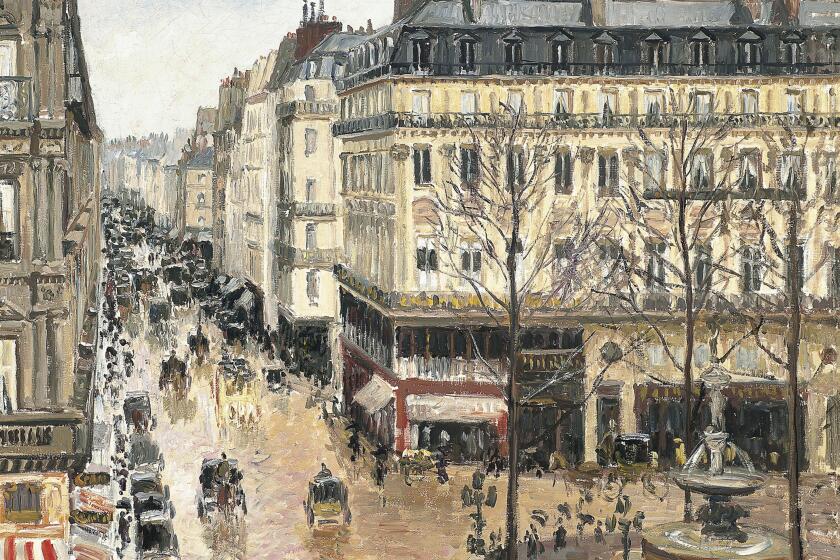Spanish museum confident it can keep California family’s artwork looted by Nazis

- Share via
MADRID — A leading Spanish museum said Friday it was confident that U.S. courts would again rule that a valuable French impressionist painting once taken from a Jewish family by the Nazis belongs to the museum, and not to descendants of the family.
In a statement Friday, the Thyssen-Bornemisza National Museum said that despite a new U.S. Supreme Court ruling that returned the case to lower courts, it was sure those courts would once again rule that Spanish law, rather than California law, should prevail.
That would mean the painting, Camille Pissarro’s “Rue Saint-Honoré in the Afternoon, Effect of Rain,” should remain in the hands of the Madrid museum where it now hangs. The painting has been estimated to be worth more than $30 million.
The Supreme Court ruling Thursday to return the case to the U.S. 9th Circuit Court of Appeals kept alive San Diego resident David Cassirer’s hopes of getting back the streetscape that belonged to his great-grandmother.
Cassirer, who has carried on his family’s lawsuit — along with the Jewish Federation of San Diego — had praised the court’s decision.
The Supreme Court ruled for the Jewish family seeking to recover a Pissarro painting that was looted by a Nazi official in 1939.
U.S. lower courts have previously concluded that Spanish property law and not California law should ultimately govern the case, and that under Spanish law, the museum was the rightful owner of the painting, which the family believed for more than half a century had been lost or destroyed.
The 9th Circuit Court will now decide whether California state law, rather than federal law, might hold precedence over Spanish law. It could overturn earlier rulings.
The Thyssen-Bornemisza National Museum said that Supreme Court Justice Sonia Sotomayor had commented during the hearing that the next ruling would probably be again in the Spanish museum’s favor.
Cassirer’s great-grandmother, Lilly Cassirer, a German Jew, had owned the 1897 oil painting. After the Nazis came to power, Cassirer and her husband fled Germany. In 1939, in order to get visas to leave, she surrendered the Pissarro painting to the Nazis.
The painting changed hands a number of times after that.
In 1958, Lilly Cassirer reached a monetary settlement with the German government worth about $250,000 today, but she didn’t give up rights to try to pursue the painting if it turned up.
Rather than being lost or destroyed, the painting had traveled to the United States, where it spent 25 years in the hands of different collectors before being purchased in 1976 by Baron Hans Heinrich Thyssen-Bornemisza of Lugano, Switzerland. He owned it until the 1990s, when he sold much of his art collection to Spain.
More to Read
Sign up for Essential California
The most important California stories and recommendations in your inbox every morning.
You may occasionally receive promotional content from the Los Angeles Times.













